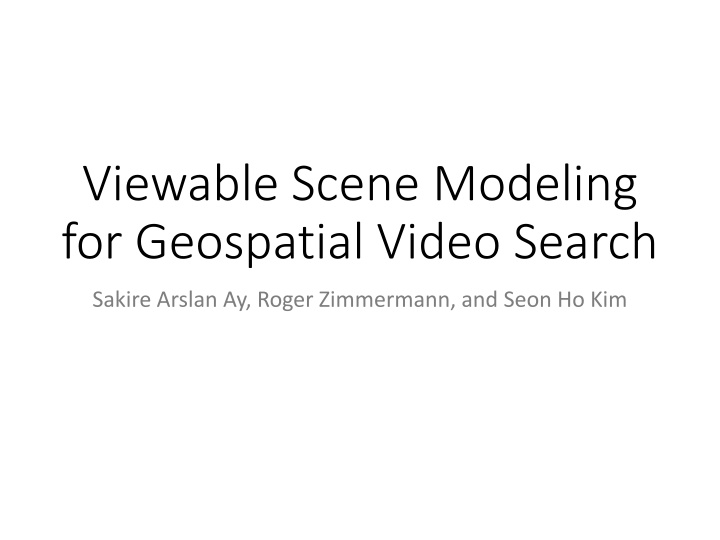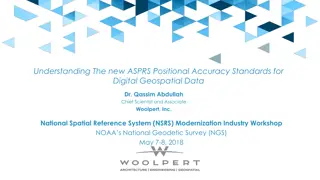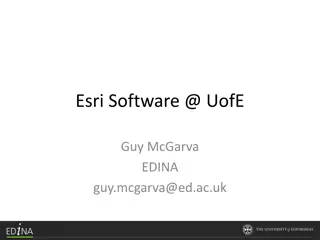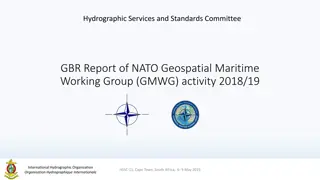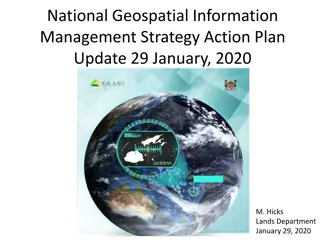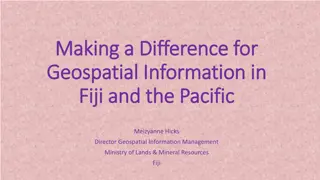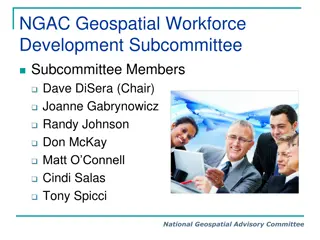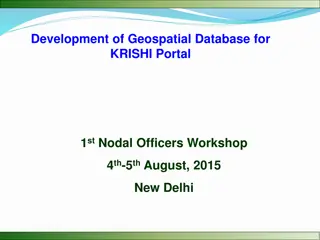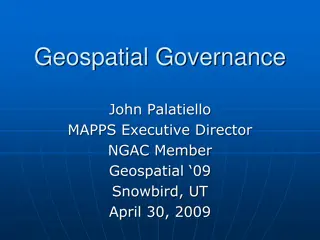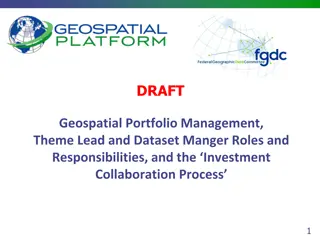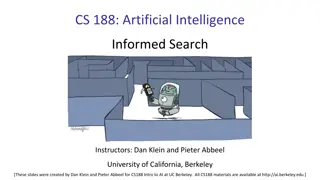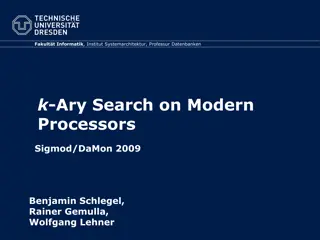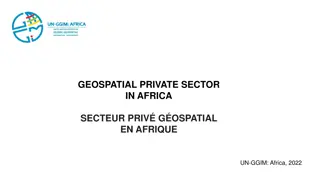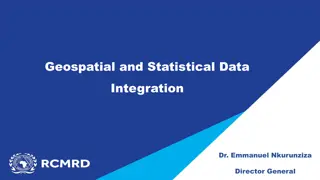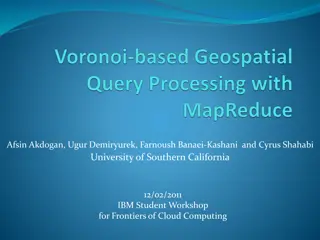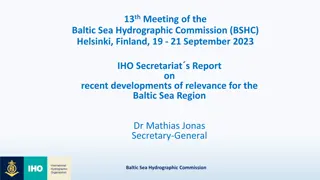Geospatial Video Search and Viewable Scene Modeling
Explore the innovative research on georeferenced video search and viewable scene modeling. Learn about automatic annotation, camera direction modeling, data acquisition, and indexing for enhanced video retrieval. The study focuses on capturing the field-of-view, meta-data acquisition, and synchronization techniques to enable efficient geospatial video analysis.
Download Presentation

Please find below an Image/Link to download the presentation.
The content on the website is provided AS IS for your information and personal use only. It may not be sold, licensed, or shared on other websites without obtaining consent from the author.If you encounter any issues during the download, it is possible that the publisher has removed the file from their server.
You are allowed to download the files provided on this website for personal or commercial use, subject to the condition that they are used lawfully. All files are the property of their respective owners.
The content on the website is provided AS IS for your information and personal use only. It may not be sold, licensed, or shared on other websites without obtaining consent from the author.
E N D
Presentation Transcript
Viewable Scene Modeling for Geospatial Video Search Sakire Arslan Ay, Roger Zimmermann, and Seon Ho Kim
Introduction video clips are being collected from various devices and stored for a variety of purposes georeferenced video search will play a prominent role in many future applications index the video data based on the human viewable space and therefore to enable the retrieval of more meaningful and recognizable scene results for user queries
Contributions Automatic annotation of video clips with the camera viewing direction Modeling of the viewable scene Prototype feasibility study Demonstration of benefits Approaches 1) modeling of the viewable scene 2) data acquisition 3) indexing and querying
Modeling of Viewable Scene field-of-view ( The camera position P is the <latitude, longitude> coordinates read from a positioning device (e.g., GPS) The camera direction vector d is obtained based on the orientation angle provided by a digital compass The camera viewable angle describes the angular extent of the scene imaged by the camera The far visible distance R is the maximum distance at which a large object within the camera s field-of-view can be recognized )
Meta-Data Acquisition (1/2) In order to keep track of the FOVScene of a moving camera over time Camera, digital compass, and GPS records the updates along with the current computer time and coordinated universal (UTC) time each video data packet received from the camera is processed in real time to extract frame timecodes Size of image sensor the height of the target object
Meta-Data Acquisition (2/2) Timing and Synchronization Using satellite time different data output rates processes data in a sliding time window centered at the current time ex. fGPS= 1 sample/sec, fcompass= 40 samples/sec, fvideo= 30 samples/sec match each GPS entry with the temporally closest video frame timecode and compass direction estimate missing data items in low frequency data streams by applying an interpolation technique
Indexing and Querying (1/3) extract the video segments that capture a given area of interest for a given area of interest Q, we can extract the sequence of video frames whose viewable scene overlap with Q
Indexing and Querying (3/3) define the FOVScene in the spatial domain with a pie-slice-shaped area and then estimate it with a Minimum Bounding Rectangle (MBR) R-tree
Data Collection and Methodology high-resolution (HD) camera, a 3D compass and a GPS receiver each video frame is associated with its viewable scene information
Analysis and Results selected 250 random query regions (Q), of size 300m by 300m within the 6km by 5km area of total video coverage randomly chose 40 videos and had a student analyze them and mark the query regions that appear in any of these 40 videos removed the videos which are reasonably far away from each query region
Completeness of Result Video Set Given 250 random queries, through manual scan, we created the list of query regions that are visible within each video in the dataset of 40 videos CircleSceneSearch, PointSceneSearc
Conclusion automatic annotation of video clips with a collection of meta-data viewable scene model implemented prototype which demonstrates the feasibility of acquiring, storing, searching and retrieving metadata enhanced georeferenced video based on the proposed viewable scene model
Future Work a better index structure that would specifically target georeferenced annotations of video data elaborate on video ranking in our future work a standard format for georeferenced video annotations must be established and issues for enabling automated integration with other providers data have to be investigated
